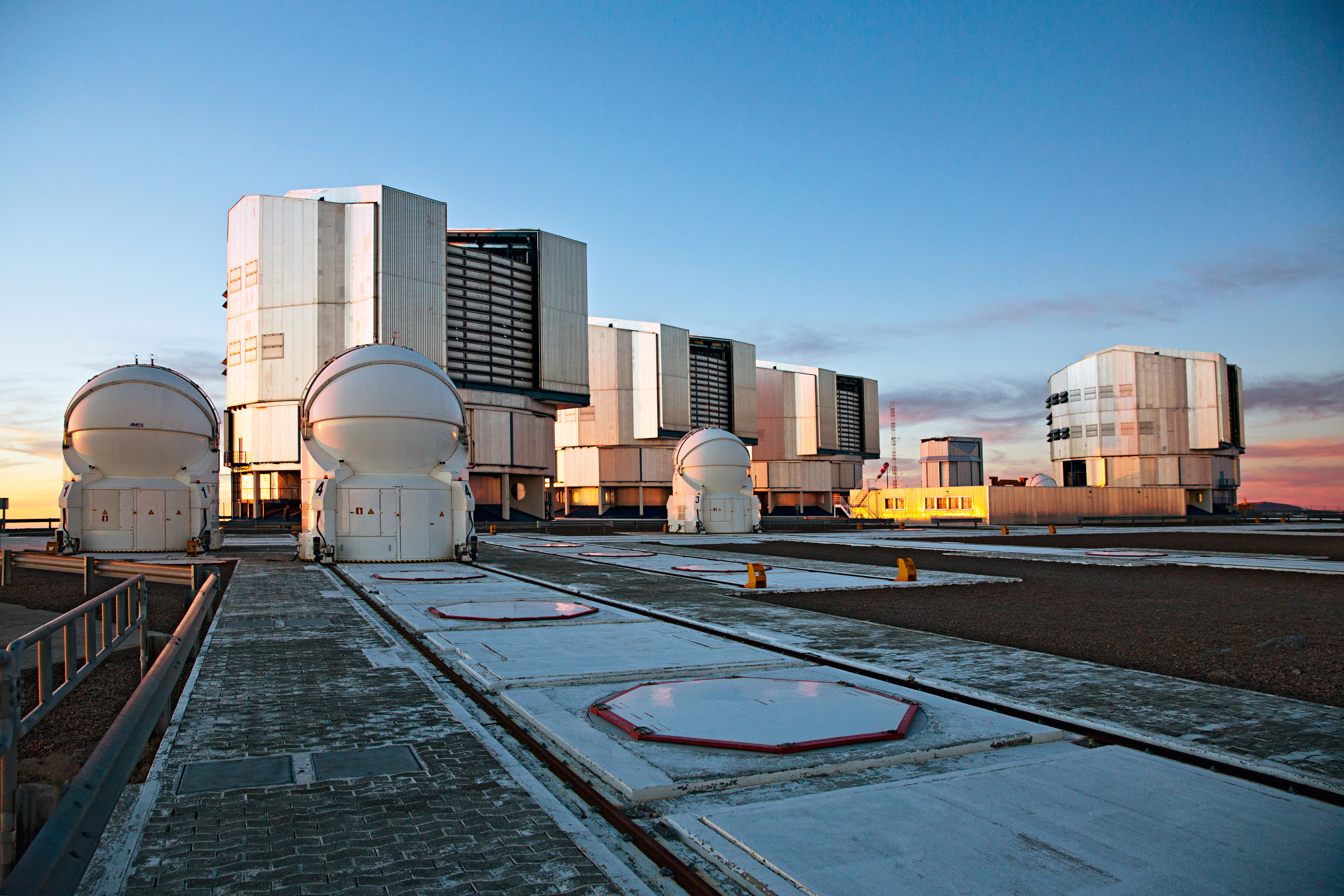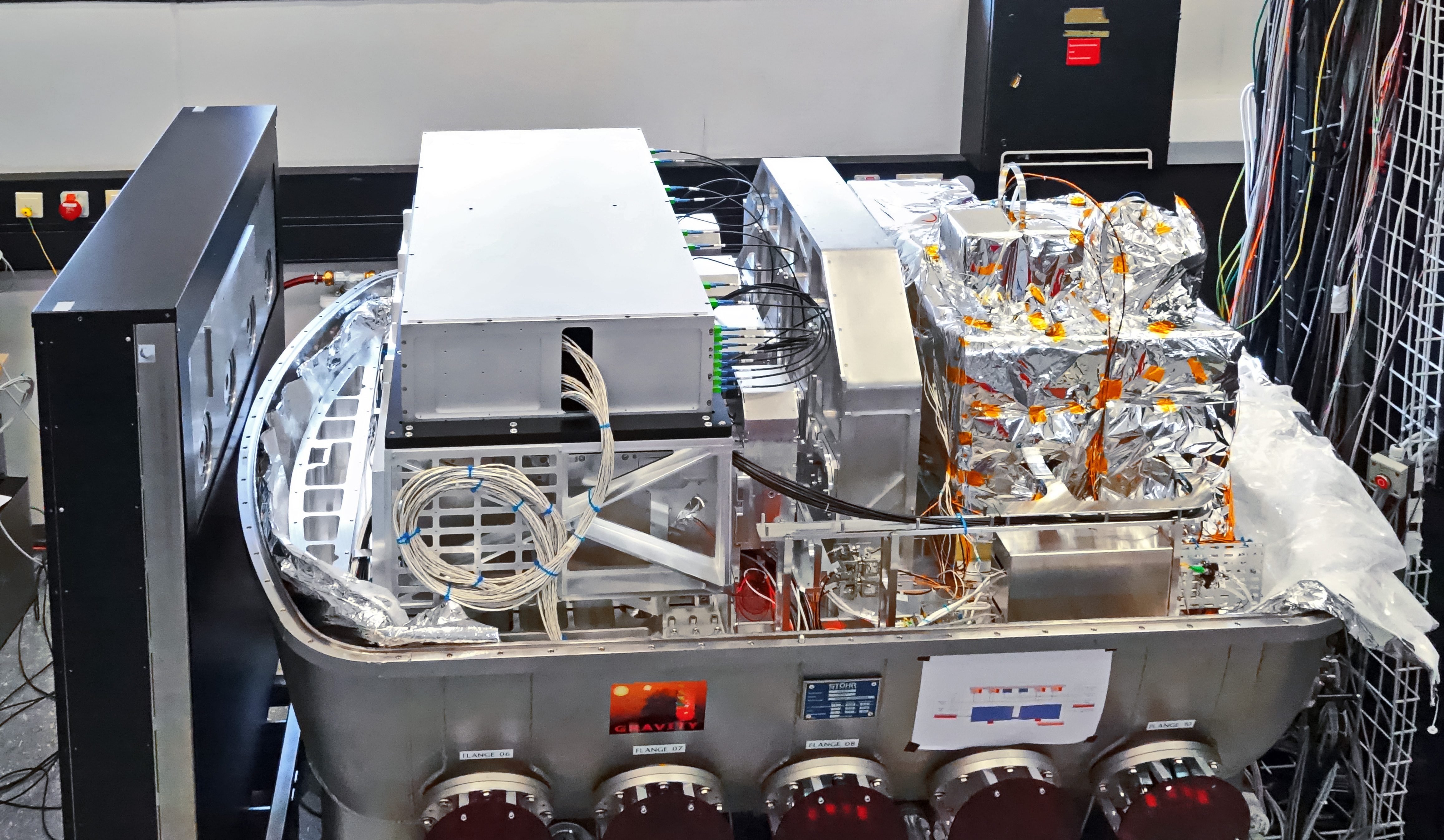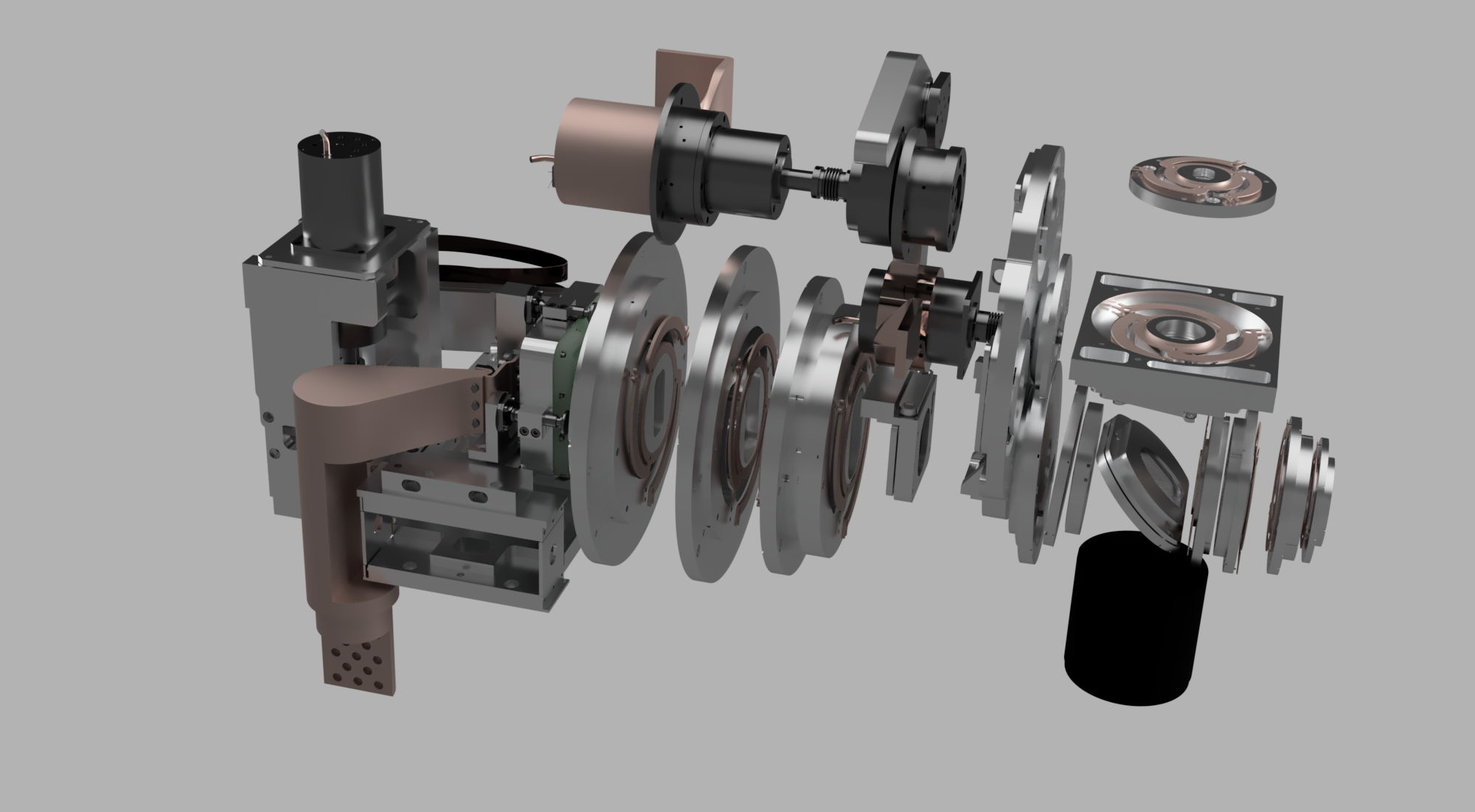The Instrument
GRAVITY is a second-generation instrument for the Very Large Telescope Interferometer (VLTI). It is designed to take spectra of objects in the near-infrared K band at very high spatial resolution, up to the equivalent of a 200m diameter telescope.
It is a complex system consisting of adaptive-optics, laser metrology, acquisition camera, piston control, four beam interferometric combiner, fringe tracker, spectrograph and a near-infrared detectors. It was developed by a consortium of German, French and Portuguese institutes together with ESO.
The I. Physics Institute was responsible for the development of the two spectrographs which take the light from the beam combiners, collimate it through the dispersive grisms and polarimetric Wollaston prism, finally focusing the spectra onto the detectors. The spectrographs also need to receive the light of the metrology laser and guide it into the beam combiner, for propagation back through the rest of the optical system.


